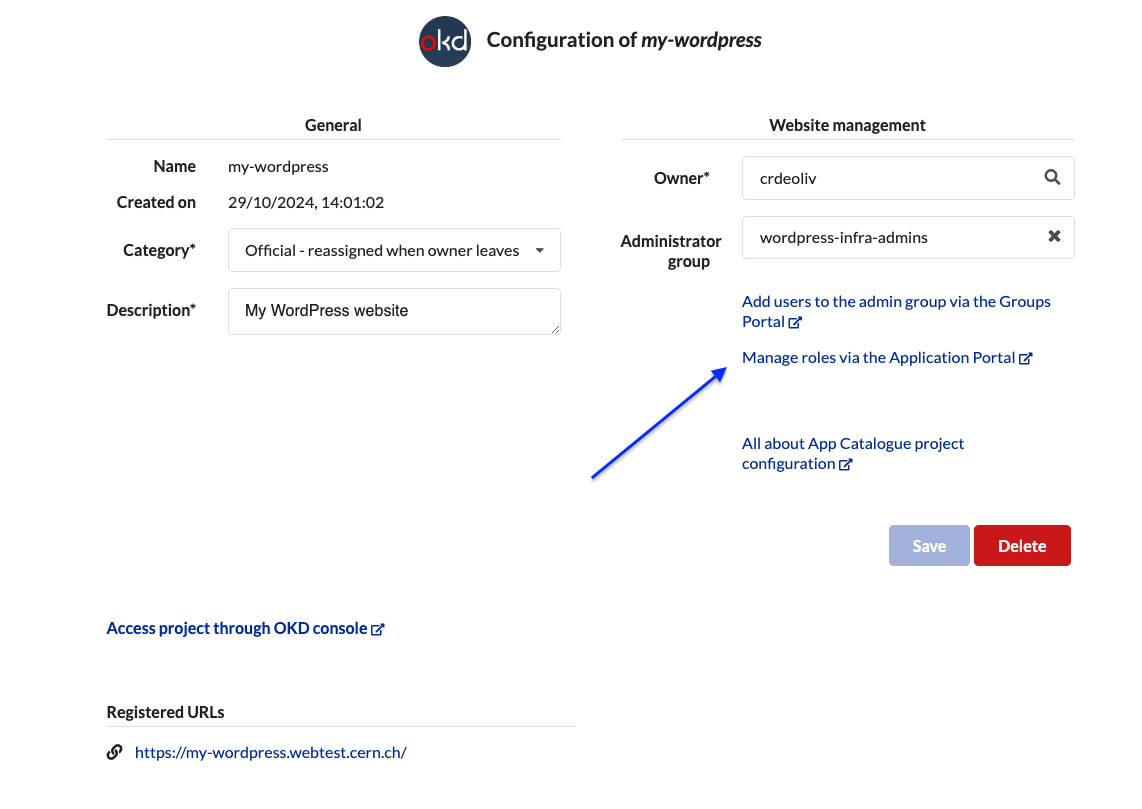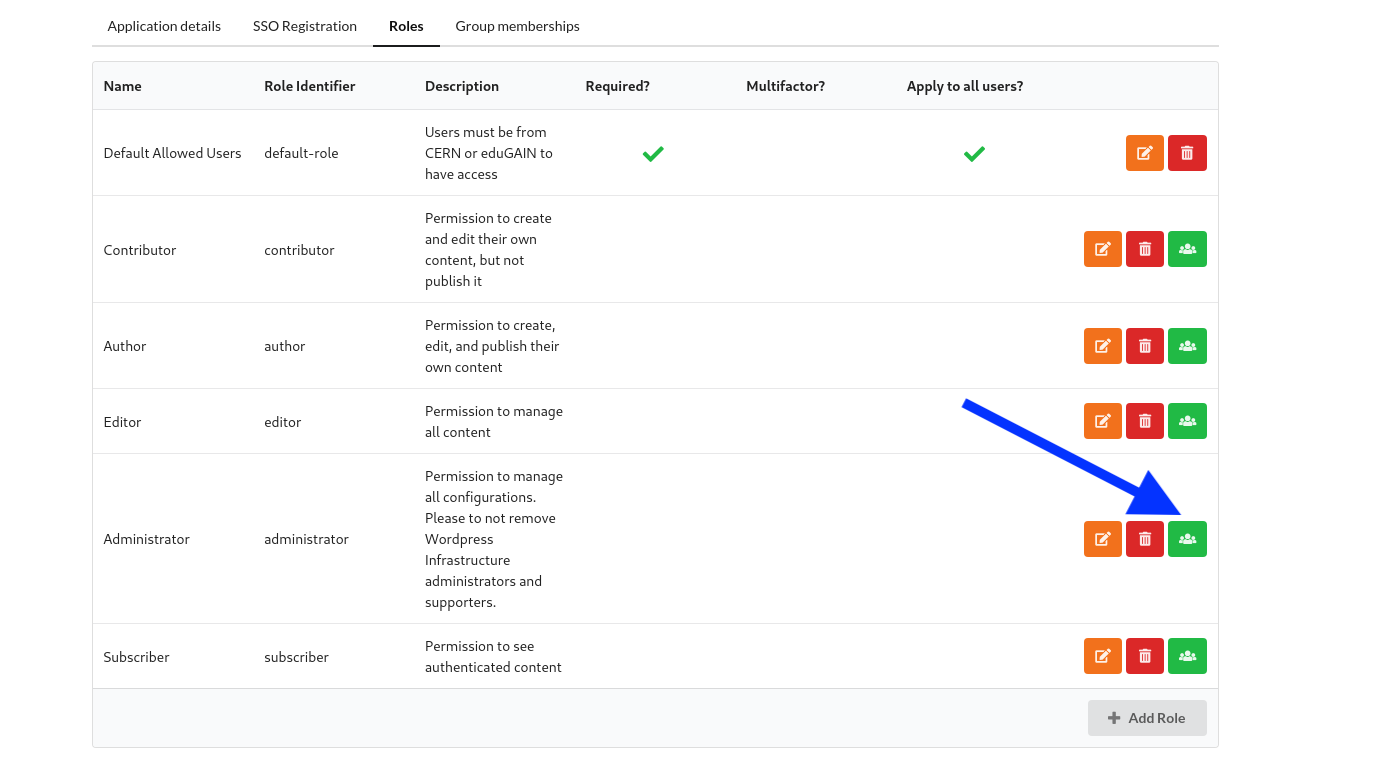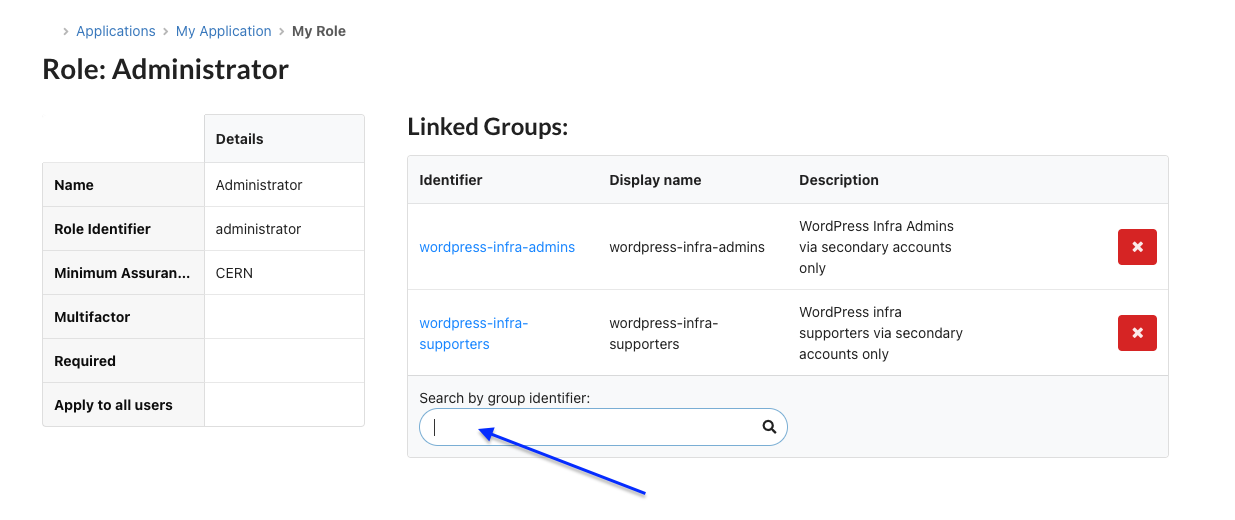Access Administration
WordPress websites support the following five roles:
- Administrator: Full access to manage the project, including user roles and settings.
- Editor: Can edit content and manage certain project settings.
- Contributor: Can contribute content but requires approval for publishing.
- Author: Can write and publish their own content.
- Subscriber: Can view content and receive updates on content creation.
Project owners are responsible for setting up these roles within their projects.
The process involves associating e-group for each role and configuring them on the Application Portal.
Initial Configuration
1. Access the Application Portal
Navigate to the relevant WordPress project under applications on the Application Portal.
Click the highlighted link Manage roles via the Application Portal.

Configuration of roles on a specific WordPress website via the Application Portal.
2. Create an e-group
If you already own an existing e-group you wish to associate with your WordPress website, skip to the next step.
If you do not already have an e-group to associate, please create one via https://e-groups.cern.ch/.
3. Assign e-groups to Roles
Associating an e-group for the Administrator role is mandatory. Other roles (Editor, Contributor, Author, Subscriber) are optional and should be configured based on project needs. Please note that changes, such as adding or removing an associated e-group, can always be applied throughout the lifetime of the website.
On the Roles tab, select the Assign Role to e-groups button for the desired role.
Please note that all websites must have an e-group associated with the Administrator role.

Assigning e-groups to specific roles is done via the Application Portal by clicking the "Assign Role to e-groups"-button.
Select the relevant e-group(s that you wish to assign to the role.

Linking a specific e-group to the Administrator role via the Application Portal.
Do not remove the wordpress-infra-admins and wordpress-infra-supporters e-groups.
These are required for support and operations.
Restricting Access
It is possible to further restrict and control access to your WordPress website.
Work in progress...